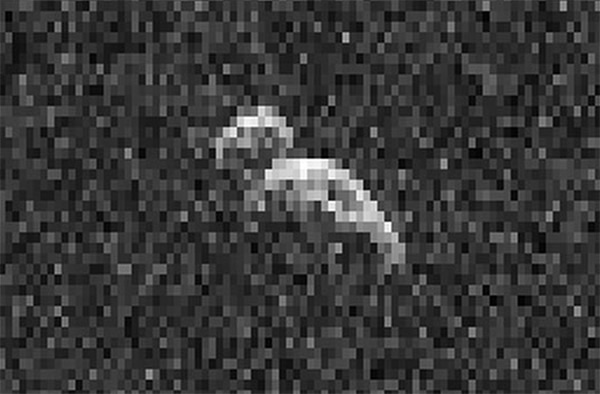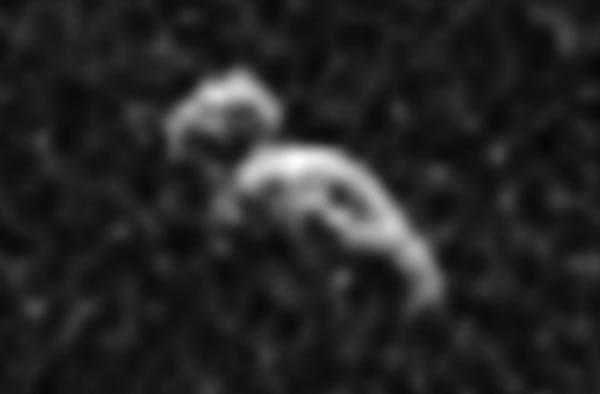Astronomers Bounce Radar Off Monster Space Peanut
Radar image of the 1.300-foot (400-meter) long asteroid 2006 DP14.
On Feb. 11, a huge space rock whizzed past our planet, coming as close as six lunar distances or 1.47 million miles (2.38 million kilometers). The object is a near-Earth asteroid, just one of many soaring through the inner solar system. As it passed, astronomers took the opportunity to bounce radio waves off its surface, measuring its size and structure — it’s a roughly peanut-shaped object 1,300 feet (400 meters) long and 600 feet (200 meters) wide.
Now that’s a big peanut.
Asteroids like 2006 DP14 are often very dark, sometimes even darker than a lump of charcoal. Observing them in visible light is tricky and may not reveal very much about their structure. But by using the powerful radar capabilities of the Deep Space Network’s 230-foot antenna at Goldstone, Calif., an image of the asteroid can be made, based on how the waves reflect off its rough surface.
The image above was captured when 2006 DP14 was 11 times farther away from Earth than the moon. Relative to Earth, it was traveling 27 kilometers per second — that’s nearly 60,400 mph.
Even at that distance and relative velocity the peanut-lobed shape of 2006 DP14 can be seen. In fact many asteroids of similar size have these so-called contact binary shapes, indicating that they may be the result of two smaller asteroids having collided and stuck together in the past.
Sometimes with these kinds of images I like to blur out the inherent pixelation, to get a better — if less accurate — sense of the asteroid’s shape. See below:
Although there was never any danger of this asteroid impacting Earth during this particular pass — or any in the foreseeable future — radar observations like this are necessary to better determine these objects’ characteristics in order to create the most accurate plots of their orbits possible.
After all, with 10,727 near-Earth asteroids out there (and 867 or so 1 kilometers or larger) it only makes good sense to keep tabs on where they’re all going.(Feb 25, 2014 11:30 PM ET // by Jason Major)













